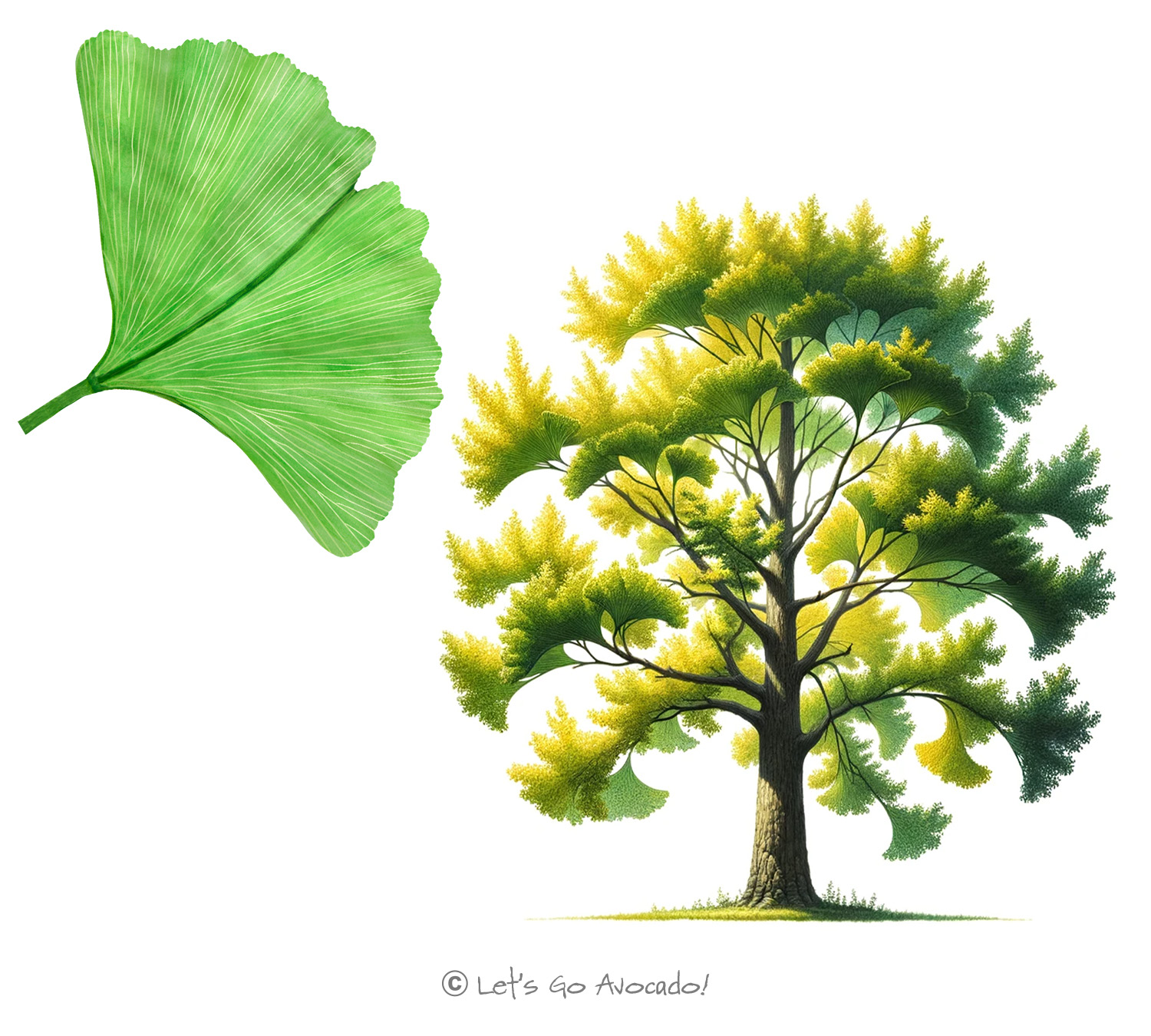The Ginkgo Biloba Tree: A Living Fossil in Our Midst
Get ready for a journey back in time with the Ginkgo Biloba tree, one of the oldest living tree species on the planet. Known as a ‘living fossil’, the Ginkgo Biloba has been around for over 200 million years, surviving events that extinguished the dinosaurs. Native to China, this unique tree is now found in urban and suburban landscapes worldwide. The Ginkgo Biloba is not only a symbol of longevity and resilience but also plays an important role in modern ecosystemsAn ecosystem is a community of living organisms, like insects and birds, and non-living components, like water and rocks, that interact with each other in a specific area. Learn More. Let’s delve into the fascinating world of this ancient tree and discover its secrets and significance.
Spotting the Ginkgo Biloba
The Ginkgo Biloba stands out with its distinct fan-shaped leaves, which turn a beautiful golden yellow in the fall. These leaves are unique in the tree world, with their two-lobed shape and radiating veins. The tree is also known for its resilience to pollution and pests, making it a popular choice for city streets and parks. Male and female flowers grow on separate trees, with the female trees producing a fruit-like seed that has a distinct, and often unpleasant, smell.
Size and Structure: An Urban Giant
Ginkgo Biloba trees can grow quite tall, reaching heights of 50-80 feet (15-24 meters) in urban settings. They have a pyramidal shape when young, which becomes more spreading and irregular with age. Their ability to withstand harsh urban environments makes them a lasting addition to city landscapes.
Life Cycle: An Epic of Survival
The life cycle of the Ginkgo Biloba is as remarkable as its history. The tree is dioecious, meaning it has separate male and female individuals. In spring, the female trees produce small, plum-like seeds with a soft and fleshy outer layer. These seeds, once fallen, emit a strong odor as they decomposeDecomposition is a natural process that happens when living things, like plants, animals, or other organic matter, break down into simpler substances. It is a part of the circle of life and plays an essential role in recycling nutrients back into the environment. Learn More. Ginkgo trees are known for their slow growth and can live for thousands of years, a testament to their endurance and longevity.
Ecological Role and Benefits
While Ginkgo Biloba trees are not native to many areas where they are now found, they contribute positively to their environments. They provide shade and contribute to air purification, especially in polluted urban areas. The unique leaves and autumn coloration also add aesthetic value to city streets and parks.
Resilience to Challenges
The Ginkgo Biloba is incredibly resilient to environmental stressors. It is resistant to many diseases and pests that affect other trees and can tolerate poor soil, air pollution, and droughtDrought is when a place doesn’t get enough rain for a really long time. It’s like having a super dry and parched period where there’s not enough water for plants, animals, or people. Droughts can be tough because they can lead to water shortages, affect farming, and impact the environment, making it harder for everything to thrive. Learn More. This resilience makes it an ideal species for urban planting and conservation efforts.
Human Connections: Historical and Modern Uses
The Ginkgo Biloba has been revered in Asian cultures for centuries, both for its beauty and its medicinal properties. The leaves and seeds of the Ginkgo tree have been used in traditional medicine, and today, Ginkgo supplements are popular for their supposed health benefits. The tree is also a symbol of peace and hope, often planted in gardens and public spaces around the world.
The Ginkgo Biloba tree, with its unique leaves, long history, and modern-day presence, is a fascinating addition to our landscapes. Each Ginkgo tree is a living link to the past, enduring through the ages and offering beauty and benefits in the present.
As young explorers of the natural world, let the Ginkgo Biloba inspire you with its story of survival and adaptationAn animal adaptation is a physical feature or a specific behavior that allows it to better survive in its environment. Learn More. Keep exploring, and you’ll uncover more about the remarkable stories and roles of trees like the Ginkgo Biloba in our world.










